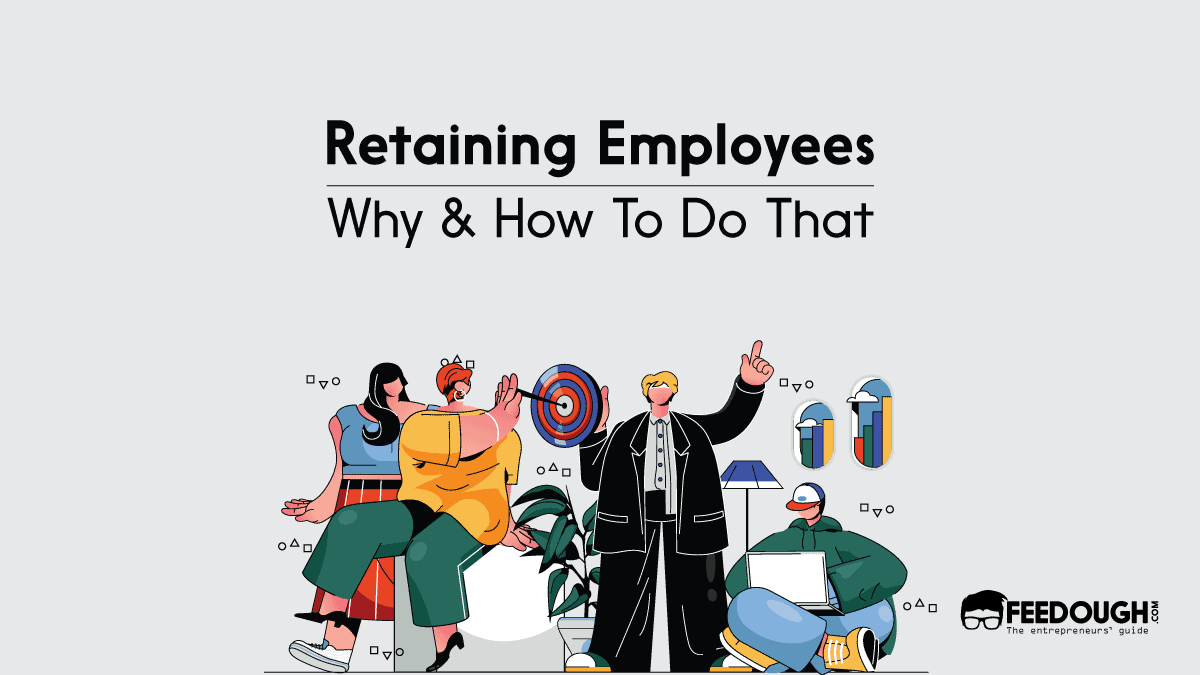The feedback culture in any organisation seems to never go on the downward slope. It would not be wrong to compare this with the denim fashion, which has always been in a rage. Similar to the denim trend, the mode and style of giving feedback might have changed, but the inherent idea remains the same
The most important aspect of the employee-employer relationship is the feedback culture that seems to be thriving in all types of global organisations. It has not only improved the productivity and output per employee but also reduced the communication gap between employees.
Almost all of us have received feedback at some point in our life. While we cannot personally judge the fruitfulness of each feedback, this article will provide you with a filter to strain helpful ones from the wide array of feedback.
What Is Constructive Feedback?
Constructive feedback is when an individual provides a meaningful judgment based on observation to promote a positive change in other being’s productivity, performance, or behaviour.
Every successful organisation ensures a regular flow of feedback in both directions. Feedback maintains a smooth work process flow, whether it is the employer’s feedback regarding some policy implementation or the employees who cannot confirm a new code of conduct.
Types Of Constructive Feedback
The style of giving feedback is different from organisation to organisation. Authoritative management might believe in throwing harsh criticisms, while certain organisations also believe in providing incentives or rewards which tend to promote proper functioning.
Hence, constructive criticism can be given in four ways.
- Negative feedback: Sharing the correct course of action by passing judgments on past actions. It aims to eliminate failed attempts and focuses on unproductive means and methods.
- Positive feedback: Giving positive remarks on previous actions or methods to ensure their practice remains in trend.
- Negative feedforward: It aims to avoid failed attempts in the future by criticising certain actions.
- Positive feedforward: It aims to ensure the continuous practice of behaviour which promotes growth and development.
Other than the four instruments mentioned above, the usage of destructive feedback can also be found in certain business entities.
However, people tend to confuse negative constructive feedback with destructive feedback. Let us try and decode their meaning and aim.
What Is Destructive Feedback?
Destructive feedback aims to deteriorate an employee’s morale by passing rude judgments. These judgments might arise due to incomplete tasks or failed projects, but their aim is never to elevate the overall performance. Such comments tend to degrade the performance level of any company.
For example, a project head repeatedly scolds an employee for project delays but never enquires about the methods or the reasons for the same.
Negative constructive feedback, on the other hand, focuses on improving performance by using tools such as criticism or over time.
For example, Mr X was asked to stay back after office hours to compensate for the project delay, which occurred due to his absence.
Few more examples;
- Destructive Feedback: Trust me, you are one of the most amateur workers we have ever hired
- Negative constructive feedback: Your method will not yield positive results. You should incorporate one’s developed by your mates.
Now that we are acquainted with the idea of constructive feedback, let us dig deep into why these are important and how they can contribute to a company’s success.
Importance Of Constructive Feedback
- Increases employee morale: Proper feedback helps improve productivity, encouraging an individual to contribute more to his work.
- Initiates a communication channel: Often, employees end up being caged at the ground level because of zero communication between the authorities and the subordinates. Feedback helps in removing such barriers to the free flow of communication.
- Ensure zero wastage of resources: Resources are limited to any organisation, and adhering to improper steps again and again will further depreciate them. Hence, feedback help with the optimum utilisation of resources.
- Promotes job satisfaction: Employees today look for a job that gives them the satisfaction of owning new skills daily. Constant feedback promotes the satisfaction derived from each task.
- Promotes personal and professional growth: Constructive feedback usually focuses on positive criticism and helps both parties to see what they can change to improve their focus and results.
- Helps in developing a healthy work environment: A healthy work environment is said to be developed when everyone focuses on bringing the best to the table and when there’s no barrier to communication and feedback.
How To Give Constructive Feedback?
Every person is different and receives feedback differently. However, there’s a rule of thumb – a six-step method – you can use to give constructive feedback.
- Start with the constructive purpose of feedback: Start the communication with an indication of what you’d like to talk about and why it is important. Don’t make them guess that it’s the feedback that you’re offering. It’s good to start with sentences like –
“Something concerns me.”
“I want to discuss something with you.”
“I feel I need to let you know.” - Include all the details of what you’ve observed: Try not to be vague when giving constructive feedback. Phrases like “you shout too much”, “You are very aggressive”, etc. don’t usually work well. Describe specific actions and behaviour you noticed about the other person.
A good example would be, “Yesterday, when your subordinate came by your cabin to get some documents signed, you tossed them all over”. - Describe your reactions: Describe the consequences of the person’s behaviour and how you feel about it. Focus mainly on your findings and observations, and try not to assume what others must have felt. When you tell them about the consequences of the observed behaviour, the other person can better appreciate your feedback.
For example: “The subordinate went to the restroom and cried for hours. I think you were a bit too harsh.” - Give them a chance to speak: Being silent and listening to the other person’s point of view is also a part of the constructive feedback process. Make them prove their point. If they don’t respond themselves, you can ask an open-ended question like-
“What do you think?”
“What are your thoughts?” - Offer specific suggestions: Try offering the other person suggestions based on your observation and their response. But make sure those suggestions are feasible and practical. Using examples as suggestions work very well.
However, if your feedback was neutral, you can omit this part or just give them ideas to help them. Just try not to sound as if you’re imposing them on the other person. Examples and ideas like these are considered good –
“I usually follow up with my subordinates every morning to make sure things are going as they should be. If they aren’t, we try to find a solution together. Maybe you can try holding a daily morning meeting as well?”
“Why don’t you assign someone else who’s good with accounting to help your subordinate? Maybe that’ll help.” - End with summarising and offering your support: End with summarising the positives and the main action points and offering your help; something like this – “Well, make sure you work on talking to your team about the morning meeting. Let me know if you need any help in getting the conference room for the same.”
Constructive Feedback Tips
Language plays a special role when it comes to giving feedback. Often, individuals in authority tend to use terms that suppress reasoning.
Let us look at a few ways by which one can give constructive feedback.
Feedback Should Be Precise And Specific
Crowding feedback by hurling some unnecessary lashes does not work in anyone’s favour.
Ensure to provide precise feedback while simultaneously adding all the necessary information.
For example: If a specific policy implemented by the organisation interferes with labour welfare, then the pack’s leader must talk about how they will suffer. This information should not include a rhetorical discussion on co-existence and welfare for all.
Don’t Go Personal:
Individuals in authority often go personal without any requirement to do so. Such behaviour puts their entire reputation at stake.
For example: If an employee fails to show up early, then employers should pass feedback regarding the problem rather than talking about their lousy behaviour.
Stray Away From Using Third-Party Sources
Giving feedback via WhatsApp or email might be less time-consuming, but one cannot deny the high chances of misinterpretation often noticed on these platforms.
For example –
Mr Cole: Hey Chris, I don’t think we can send you to HQ tomorrow. The presentation isn’t good yet.
In this text, it is unclear whether Chris is a bad worker or Mr Cole just wants to add something more to the presentation.
Timing Is The Key
No matter how good feedback is, bad timing is bad timing, especially when the person of interest is going through a tough period.
For example, if you are aware of an employee suffering from major family issues, it is better to approach them after some time.
A Feedback Sandwich Does Not Work
People often use this technique to make their criticisms much more digestible. This technique involves layering a harsh criticism in between two compliments.
This method completely dilutes the entire motive of the feedback.
For example,
Mr Cole: Chris, you’re really good at handling stressful situations but try to be on time.
This makes it more of an appreciation rather than giving feedback on punctuality.
Focus More On The Intricacies
Be specific when it comes to constructive feedback. Just telling the other person if he’s good or bad isn’t constructive feedback. It’s when specifics are included to support the judgement.
For example, ‘You have good presentation skills’ isn’t constructive feedback. ‘I like how you use animations and videos in your presentation to make it more interesting’ is one, though.
Final word
Giving feedback requires intense research and analysis of the subject’s behaviour. Also, people should try and get into the other person’s shoes to understand situations better. In organisations, the hierarchy might concern feedback givers, but one should supersede such obstructions to have an honest communication cycle.
Go On, Tell Us What You Think!
Did we miss something? Come on! Tell us what you think about our article on constructive feedback in the comments section.
A startup analyst who believes that every big project is the result of numerous small efforts that go into the way. Giving anything below 100% is a huge setback to my natural capabilities.








